France: The use of high magnetic fields for large neutron-sized sample production
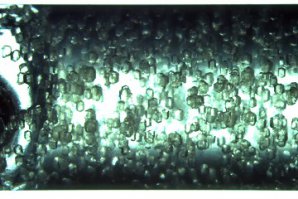
An aligned polycrystalline array suspended in a fixed hydrogel following alignment in liquid form while in the field.
Growing large crystals (>0.1mm3) of biological macromolecules that are suitable for neutron crystallography is not an easy task. The solution to this problem holds the key to overcoming the single biggest difficulty that limits the technique, and would have a major impact on the range of biological problems that could be addressed using neutron protein crystallography.
Whereas it is often very difficult to grow large single crystals, it is typically far less of a problem to produce “showers” of crystals – immense numbers of very small crystals (microcrystals). In the pursuit of the growth of large single crystals, these showers are often regarded as a rather negative outcome.
However – what if there was a way to arrange many microcrystals so that they behave as if they were a large crystal?
The use of high magnetic fields for large neutron-sized sample production
It has been shown that high magnetic fields (e.g. 17T) can be used to augment the growth of large crystals. It has also been demonstrated that high fields can induce the alignment of microcrystals that can subsequently be immobilised in hydrogels. ILL, in collaboration with Birmingham University (UK), JCNS (Germany), and Lund University (Sweden), have extended this approach, further demonstrating the potential for the growth of larger protein crystals in magnetic fields, and carrying out monochromatic neutron single crystal analyses on such crystals.
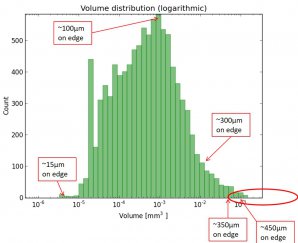
Figure 1. Histogram showing crystal volumes measured over a year at ESRF. Microcrystal “showers” occur over the entire range of systems. Figure courtesy of M. Bowler (ESRF, Grenoble).
Large single crystal growth in high fields.
During the period of the SINE2020 project, considerable effort was put into tests to investigate the use of high magnetic fields for the enhancement of large crystal growth. While this phenomenon has been demonstrated previously, it has not been easy to carry out systematic studies of this type – mainly because of the fact that routine and continuous access to such field strengths (as well as access to the required neutron instrumentation) over the extended periods associated with crystal growth is not at all easy, and furthermore that the costs of a dedicated system are not insignificant. However, a clear demonstration of this approach will help make the case for sample environment requirements that are needed to make this approach more accessible to users.
Microcrystal alignment in hydrogels.
The microcrystal alignment approach, while less known and less characterised, has also been shown to have significant potential for neutron macromolecular diffraction. Depending on crystal symmetry, it is in principle possible to use high fields to obtain three dimensional alignment of micro-crystalline “showers”. However, in many cases, the net effect is the alignment of thousands of microcrystals along one of the principal axes, with random rotation of the crystallites about this axis. The net result is the cylindrical averaging of the data in the same way as would occur for a crystalline fibre or for a single crystal if was rotated about this axis during data collection. The fixation of samples that are ordered in this way can be achieved through the preparation of samples in hydrogels that are liquid at protein-tolerable temperatures and which then serve to immobilize the aligned crystallites when the temperature is reduced.
This approach is particularly interesting because micro-crystalline “showers” occur very frequently and are typically regarded as a nuisance in crystallogenesis work aimed at the production of larger single crystals. Any method that successfully exploits this alignment approach in a widespread way may opens up NMX to a hugely increased range of problems, as indicated in the inset crystal volume histogram (Figure 1 above).
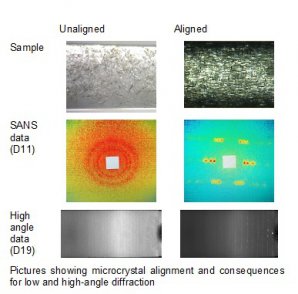
Figure 2 Pictures showing microcrystal alignment and consequences for low and high-angle diffraction
While cylindrical averaging does incur some loss of information, the extent of this is far less than might be expected – especially when it is recognised that the reflections that overlap systematically as a result of the crystal symmetry are in many cases equal in intensity.
A cylindrically averaged “fibre” dataset (which naively can be thought of as two-dimensional) can be collected much more rapidly than a full three-dimensional dataset, offering the prospect of very serious gains in terms of valuable neutron beam time.
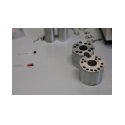
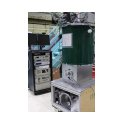
Acknowledgements: Trevor Forsyth and Ashley Jordan, ILL
Back to The Road to the ESS
Other articles: ILL, Crystal Growth, Methods for large protein crystal growth, Phase diagram crystal growth, Crystallization Chamber




